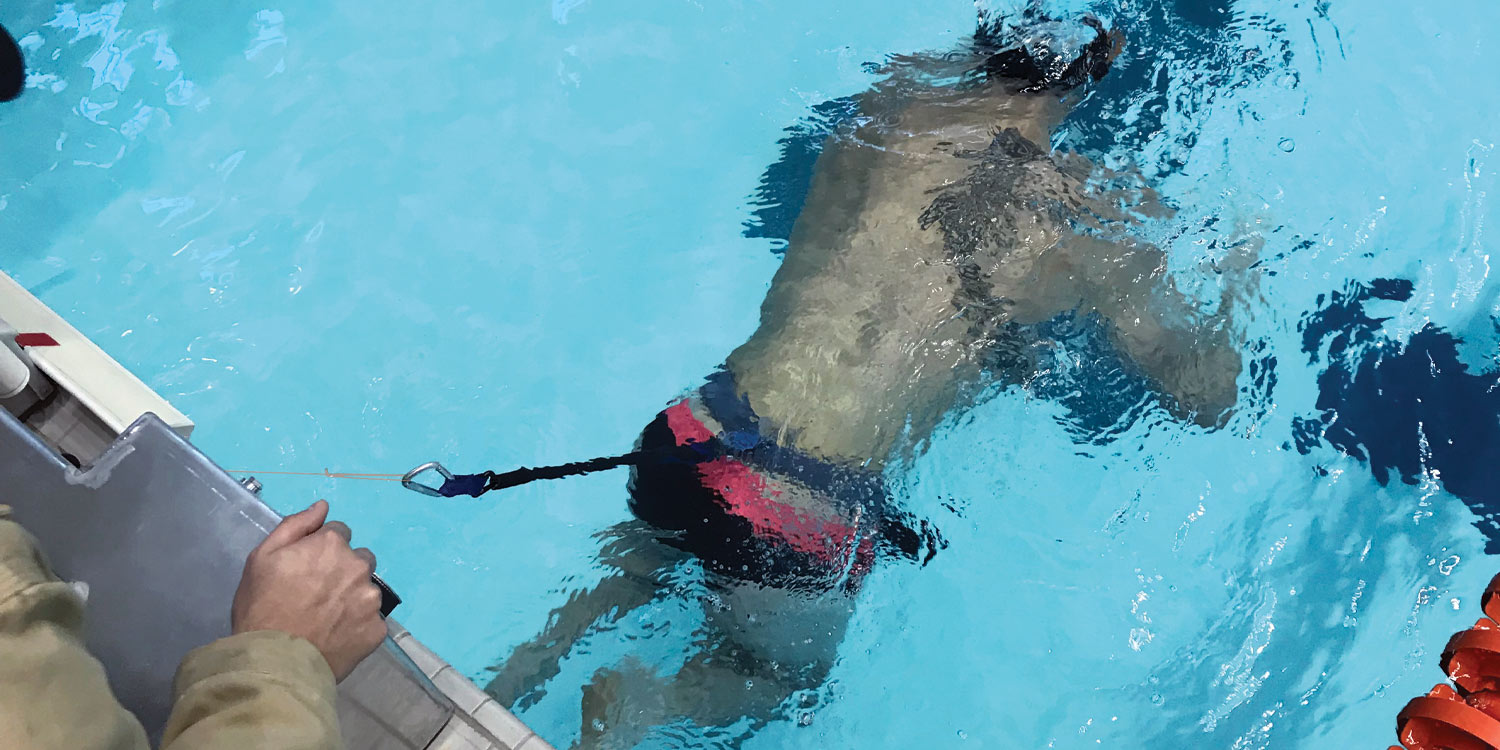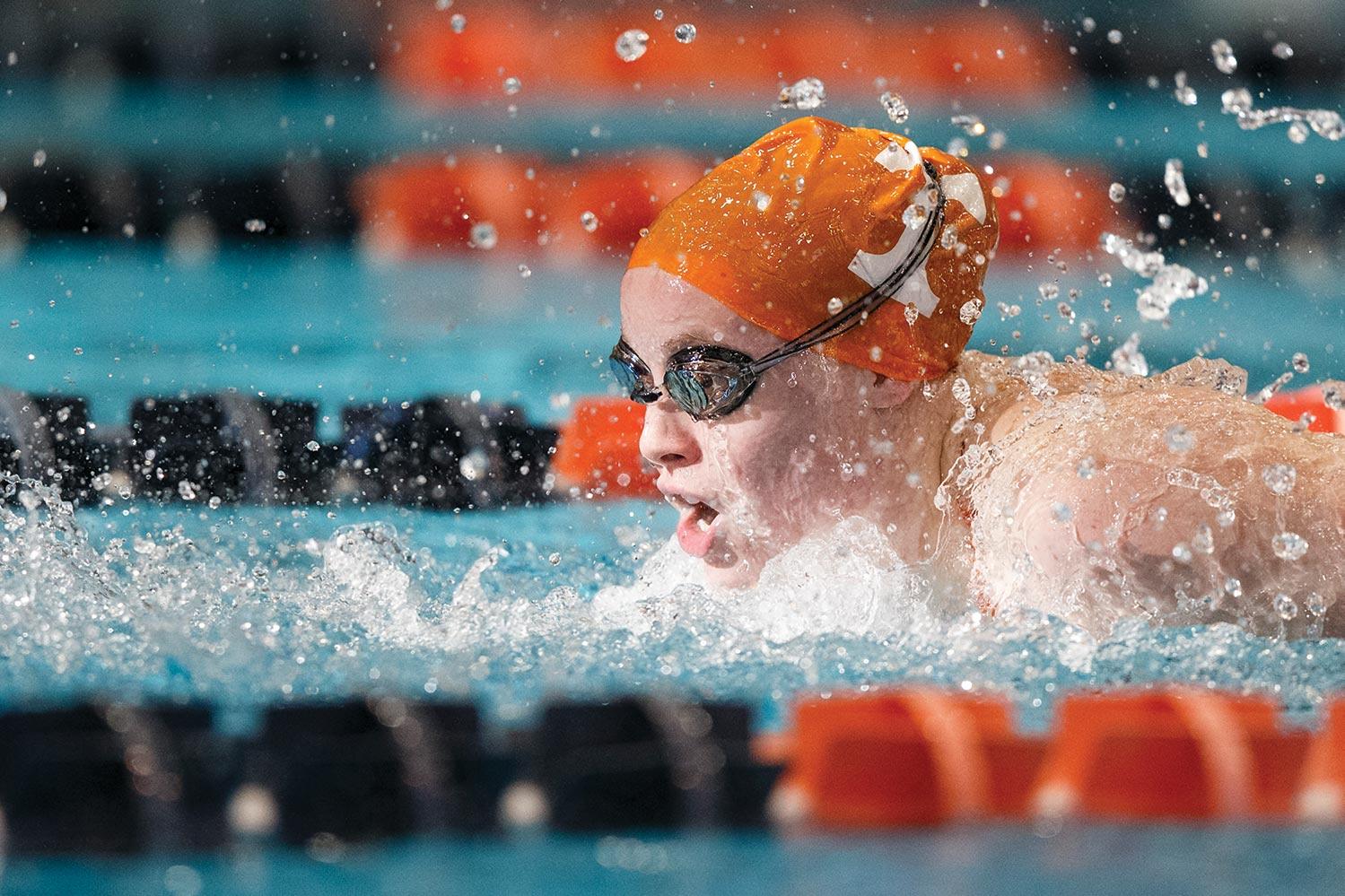There’s a revolution brewing in competitive swimming, and it traces its roots back to a MABE project.
A team of recent MABE graduates invented a swim resistance device under the guidance of Associate Professor Emeritus J.A.M. Boulet’s senior design course, which presented real-world problems to teams of students.
UT swimming and diving associate coach Lance Asti brought one such project to the department.
Asti said that resistance devices that help instructors teach their swim teams are “very expensive, very bulky, cumbersome, and time consuming,” requiring weights to be moved and machines to be reset for each individual.
The team’s frustration with the current selection of contraptions led to Asti submitting it to MABE, where fate intervened.
“Students in the class made a list of what our strengths were and Dr. Boulet created teams out of those lists so that each unit would be a mix of those abilities,” said Kelsey McConachie, who served on the project. “We pulled topics out of a hat, so it was literally the luck of the draw that we wound up working on this.”
The “this” that McConachie, Isaac Nolan, Thao Strong, and Ryan Tinker worked on was a solution to Asti and the swim team’s dreams: a resistance device that is far more user friendly than past systems.
Nolan, an avid hunter and outdoorsman, kept coming back to the idea of a fishing reel; Small, compact, and mobile, reels are essentially a pulley system that could meet both the needs of the swimmers as well as answering the key wants of the coaches.
Coordinating with Asti over the course of a year, the students tested prototypes in the pool with UT swimmers, settling on a final device.
“The feedback from the team was invaluable,” McConachie said. “None of us were that familiar with competitive swimming, so we had to lean heavily on the team for information that helped us shape the prototype and for information on how it was performing.”
Housed in a small rectangular box are two compartments containing the mechanical components, with an external section which allows swimmers to
choose resistance levels.
Once connected to the diving platform as an anchor, the device enables two swimmers to use it simultaneously—even self-reeling at the end of use—and can be adjusted for any pool.

Once we started to have success with it, the team suggested it might be worthy of a patent, so we got in touch with the UT Research Foundation and it took of from there.”
In fact, the team’s device became the first undergraduate project to be licensed by UTRF and was purchased by a sporting goods company that hopes to bring it to market.
“This group of students developed a solution to a specific problem identified by the customer,” remarks UTRF Vice President Maha Krishnamurthy. “We couldn’t be more excited that this is UTRF’s first undergraduate technology to be licensed and cannot wait for the product to go to market sometime next year.”
While seeing their work become commercially viable was special for the team, McConachie said that the process was personally redeeming for her in a different way.
“You spend so much time as an undergraduate learning concepts and theory, so it was neat to put it all together in a tangible way,” McConachie said. “It made us all feel like we’d moved from class work to ‘true engineering.’ To end your academic career that way is awesome.”
McConachie said that the team has continued to stay in touch and is working with the sporting goods company to perfect a final product for market.
